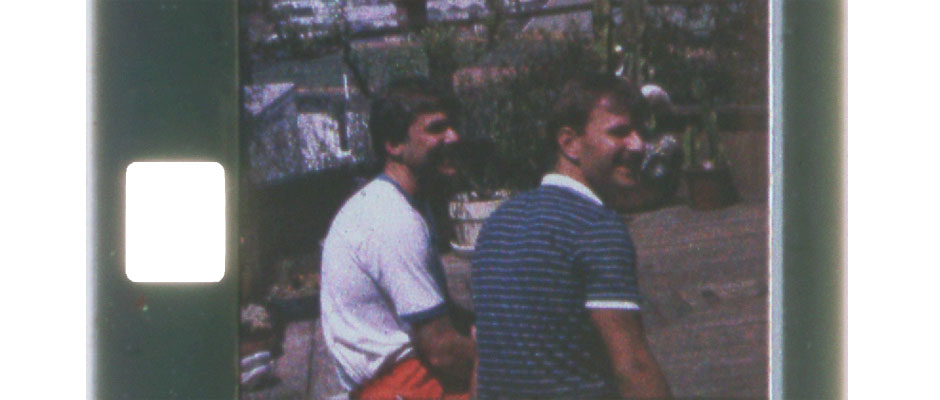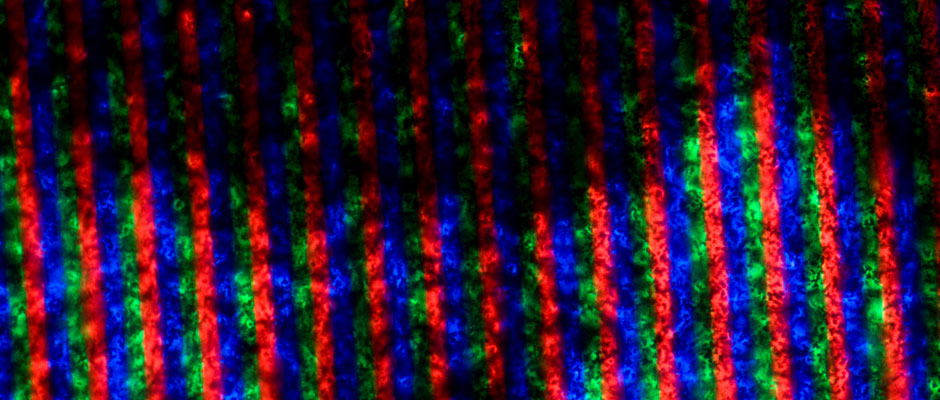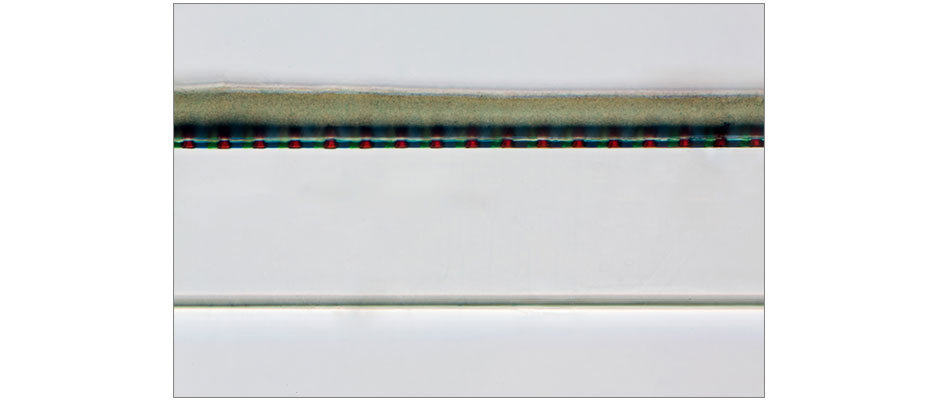


8mm reversal positive on polyester support

Red, blue, and green bands run vertically across the image.

A colored screen lies beneath the black-and-white emulsion.
Process DescriptionPolavision, an ‘instant’ movie system introduced by Polaroid in 1977, revived the concept of additive color cinematography. Similar to many early additive systems, Polavision recorded a color image on a black-and-white emulsion with the use of a color screen composed of microscopic dyed parallel lines. The film was encased in a special cartridge containing an instant processing reagent. Despite its technical accomplishment and ‘instant’ appeal, Polavision was a commercial failure. |
|